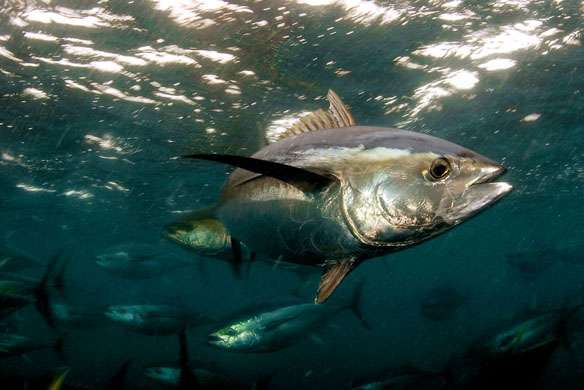Too many vessels, too little management for tuna fishing in the Eastern Pacific

As the Inter-American Tropical Tuna Commission (IATTC) meets for an extraordinary session this week, WWF is calling on member countries to urgently reach consensus on conservation measures for ecologically- and commercially-important tropical tuna species. Management controls on fishing several species expired last month, leaving the stocks open to exploitation without essential safeguards.
"The reality is that there are no management and conservation measures in place right now for intensively-fished tropical tuna species in the Eastern Pacific - this is a dangerous situation," said Pablo Guerrero, WWF LAC Fisheries Director. ". Even the old conservation measure -which wasn't perfect and needed improvements - is not in effect for the 2017 fishing season."
WWF has been speaking with members and fishing industry representatives to express concern that a lack of action will be a major setback to the IATTC decision-making processes. If another meeting adjourns with no measure in place, it raises the risk that populations of bigeye and yellowfin tunas will become overfished. Fishing mortality in the eastern Pacific has risen notably in parallel with the continuous increase in capacity of the purse-seine fleet operating in the region.
"A continued lack of consensus will also hurt several tuna fishery improvement projects in the region and will have an immediate effect on impeding sales to markets that demand sustainable products," added Guerrero.
Tuna resources in the Eastern Pacific Ocean sustain a very large industry that supports the livelihoods of tens of thousands of people and contributes to economic growth and social development in the region. Responsible management is a necessary condition for achieving sustainable fisheries.
Currently there are three conservation proposals of tropical tunas in the EPO, submitted by the United States, Ecuador-Colombia and Mexico: a) establishing catch limits for bigeye and yellowfin by individual vessels; b) establishing a global catch limit for bigeye and yellowfin caught in sets on fish aggregating devices (FADs); and c) implementing restrictions on the use of FADs. WWF urges the IATTC to reach agreement at this meeting and resume deliberations on addressing overcapacity.
"WWF considers it necessary to address the main threats, such as overfishing and overcapacity, and urges countries to find common ground and agree on effective conservation measures to reduce fishing mortality of yellowfin and bigeye to levels recommended by the commission's own scientists," concluded Guerrero.
Provided by WWF

















